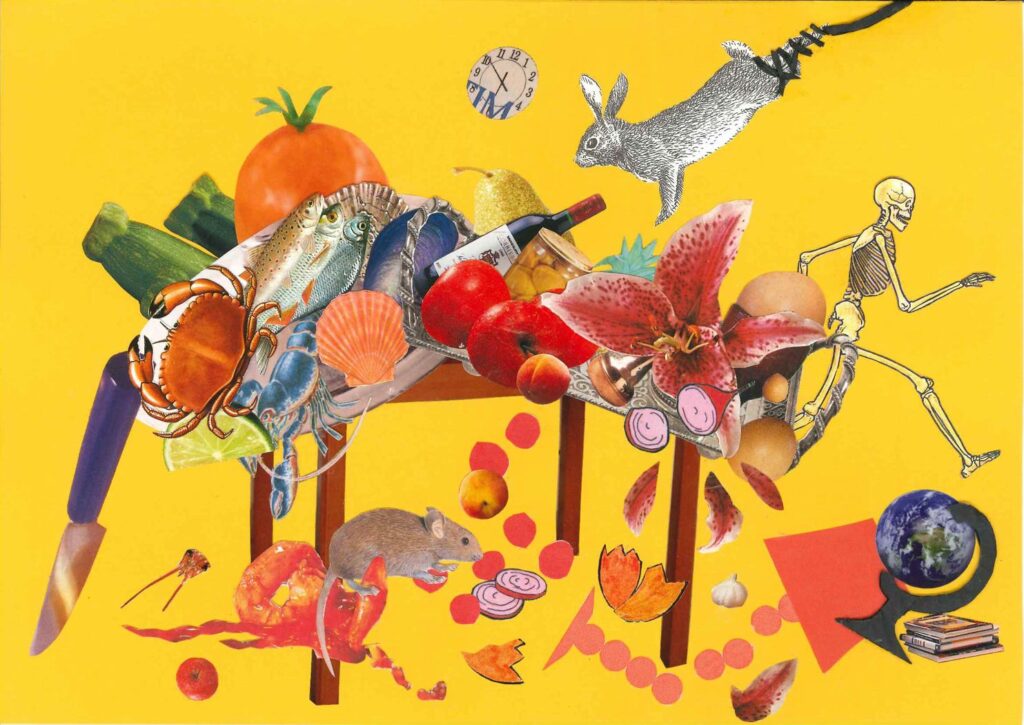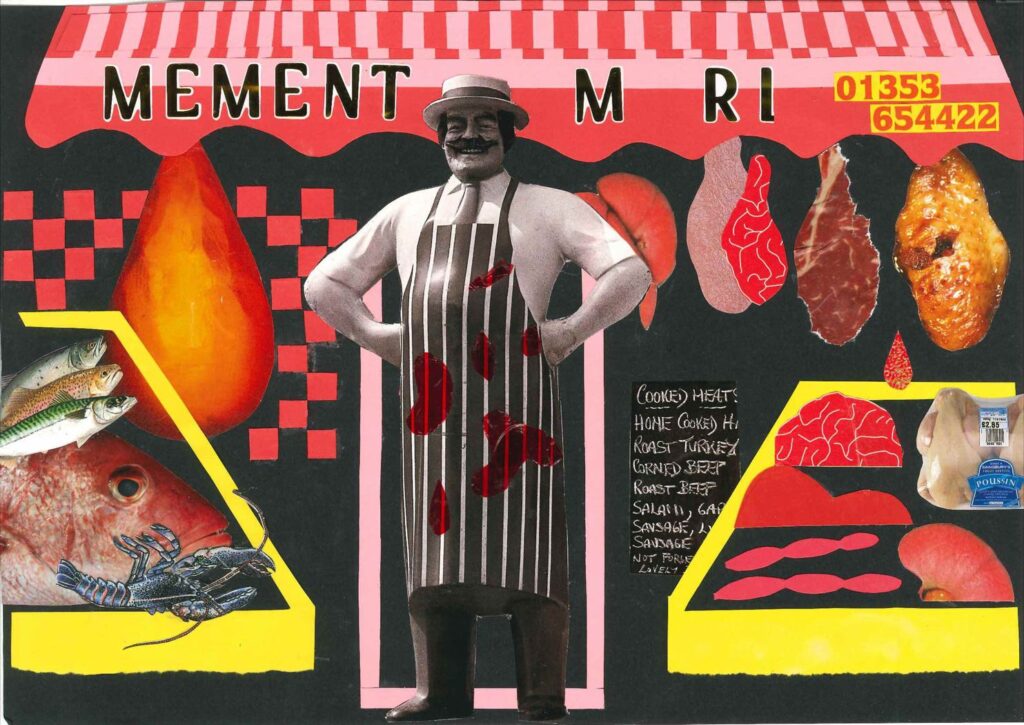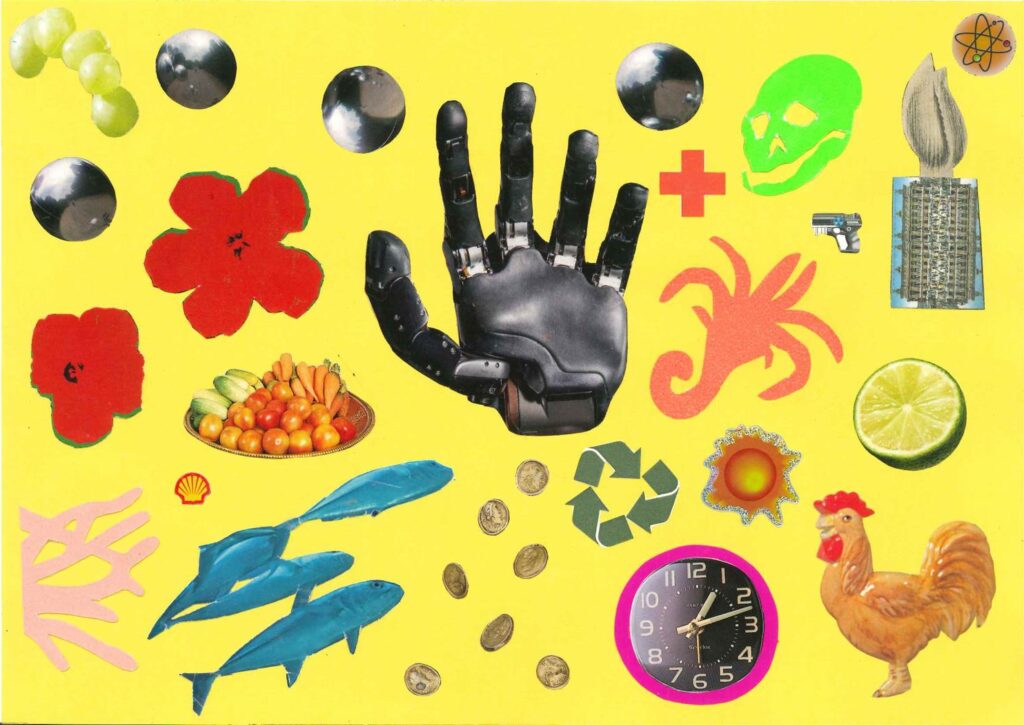Anastasia Braithwaite
Year of birth: 1997.
Where do you live: London.
Your education: BA in Photography.
Describe your art in three words: life, death, colour.
Your discipline: visual arts.
Your work is heavily inspired by vanitas still-life paintings. What drew you to this art form, and how do you adapt its themes to resonate with a modern audience?
I was drawn into vanitas still-life paintings in my third year of university. I had always appreciated colourful displays of fruit and flowers but while studying photography, I began to research more into the history of still-life and fell in love with Vanitas. The somber messages- how each posed scene was rich with symbolism which had previously gone over my head.
To resonate with the modern audience, I present vanitas themes through abstract, playful shapes and vivid colours rather than the accurate realism of the traditional vanitas paintings. To feel modern and contemporary, I guess. I adapted these same symbols and themes into an almost childlike way where the reminder of death doesn’t seem as serious. I want these bright features to fight each other for the viewers eyes, to mimic shop displays, advertisements and products that we see all throughout the day as consumers.
In what ways does the use of recycled and found images contribute to your artistic message on consumerism and sustainability?
Using recycled and found images is essential to my understanding of what vanitas represents. Remember life is fleeting, remember you will die, and when you do what will you be known for, remember it’s what you do behind the scenes with your morals. I see it as if what you are choosing to do in your life is just for appearances, will you be happy with yourself in the end? I believe it’s up to everyone to do their part in being sustainable, when no one’s watching you.
 Anastasia Braithwaite | Passing Through | 2024
Anastasia Braithwaite | Passing Through | 2024
How do you balance the bright, playful colors and compositions in your work with the serious themes of mortality and consumerism?
I’m not sure i consciously think of how to balance the two, I try to make them go hand in hand. I think about what specific theme/message I might want to present and then channel my signature style of bright and ‘fun’ through that.
Could you elaborate on how you interpret “Memento Mori” in your work? Do you aim for viewers to feel its presence subtly or more directly?
I want the presence of memento mori to be subtle in my work, to require the viewer to look past the aesthetic and deconstruct what all these symbols together may mean, like in ‘Persuits and practices’ specifically. I feel like in vanitas paintings the message is subtle but it’s the repeated and gathered symbols all together that make it direct.
Memento mori exists in my work through symbolism of current affairs that make me think of ethics and the need to critically look at ourselves. Natural resources that we hoard in the west, war, recycling, capitalism, everything that i think is a disease to the Earth. Things that have a suffering beyond ourselves, things that should make us remember life is short, we will die and that’s the only thing that is certain. Selfish consuming by individuals, businesses, governments, countries are all detrimental to life and future of the planet.
 Anastasia Braithwaite | Nothing lasts | 2024
Anastasia Braithwaite | Nothing lasts | 2024
How does your creative process begin? Do you start with specific symbols in mind, or does the meaning develop as you assemble each collage?
I start each piece of work mostly knowing what I want to portray, what symbols i want to include and then seem to work on a colour palette from there. Half the time it’s a specific painting (or different features from multiple) that inspire me so much and i can’t get out of my head and need to replicate them into my style, for example my work ‘All is vanity’ is my homage to Jacques de Gheyn’s ‘Vanitas still life’.
Or I’m thinking about a specific thing like self-serving acts that don’t show a collective care for humanity, things i think are immoral or greedy. Ones where people step on others in order to succeed or fulfill their own joy despite repercussions on those ‘below’ them. A phrase i always have in my head is ‘at what cost?’. I think that sums up where a lot of my work comes from, we want to fill our own desires but what detriment does that have?
So, I would say the meaning is there from the start, but the content, colour palette of each piece develops as i go. Composition is a tricky one which can either take days, hours or I can be impulsive and often i find myself sticking my scalpel underneath edges in order to move the placement of something already stuck down.
 Anastasia Braithwaite | Persuits and practises | 2024
Anastasia Braithwaite | Persuits and practises | 2024
In many of your pieces, you mimic the aesthetic appeal of modern advertising. How do you see the relationship between consumer culture and traditional vanitas themes?
In my eyes, I cannot help but see our current consumer culture as a direct example of what traditional vanitas themes were warning us of. It feels as if we are past the warning, and in regards to any chance of self-reflection on consuming instant pleasure or goods, society in a very dark place of no return.
We can sum up Vanitas themes to say that, specifically through coins and the luxurious foods in excess, we have been warned of overindulgence, materialism and of wasting our time alive pursuing the wrong things. In our current culture we are always (subtly or not) being pushed to purchase, follow trends, to find something else we need or can’t live without because capitalism depends on it. We are encouraged to hoard, collect, copy without a care for where our goods came from, and as we are completely removed from this process of where these objects have come from, we are less likely to enquire or reflect on the ethics and be swept up in the pleasure. Consumer culture says the objects we buy shape our identity and place in society- so much is riding on our posessions and this large impact on us steals so much energy and time dedicated to consuming/keeping up, whereas Vanitas is urging us to slow down, do not gorge, consider, remember the transience of life.
The relationship is interesting to me because traditionally it was religion that was the force behind vanitas, with God being the person that would judge you at the end and who you answer to. I am not religious so I see my work showing how it is the Earth and climate change who we will have to bow down to/be judged by at the end, whose mercy we are at.
What challenges do you face when working with mixed materials, especially when conveying themes of decay and impermanence?
I cant think of any challenges I personally face.

Leave a Reply